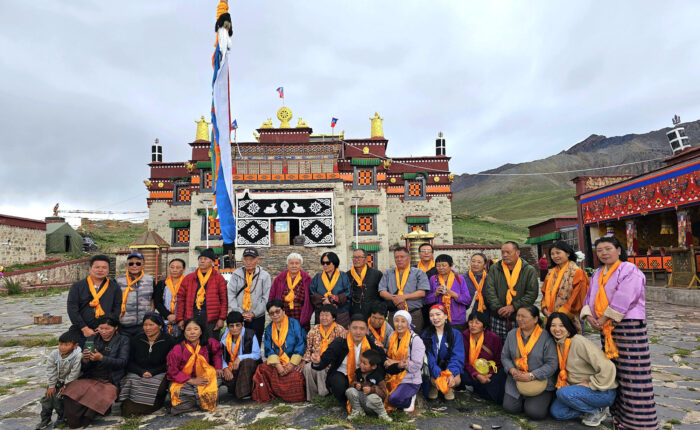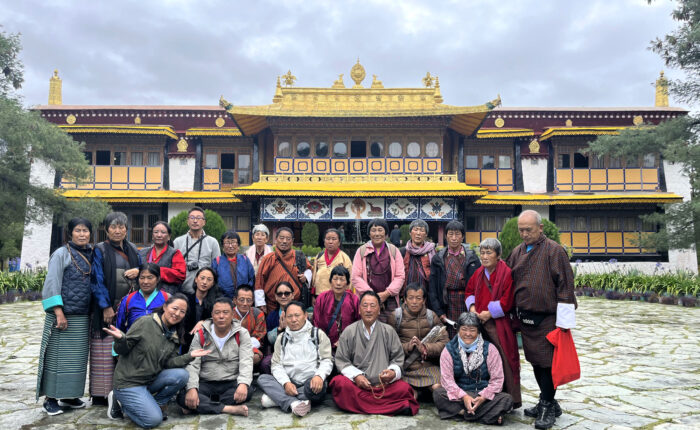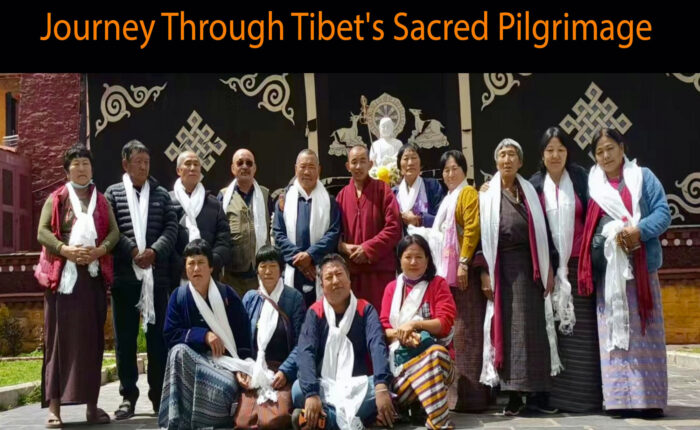Tibet is a destination that captivates the spirit and ignites the soul, inviting pilgrims from around the globe to embark on a transformative Tibet Neykor. We love Tibet for its unparalleled spiritual richness and breathtaking landscapes. The land is home to numerous sacred sites, including the iconic Potala Palace and the revered Mount Kailash, where each step taken is imbued with devotion and mysticism. For those seeking spiritual renewal and deeper connections to their faith, the pilgrimage routes in Tibet provide an extraordinary opportunity to purify one’s heart and mind.
Yarlung Sheldrak, often referred to as the Crystal Cave of Yarlung, is a sacred life-upholding cave located within the Tradruk Temple, Tibet’s oldest temple, constructed by Dharma King Songtsen Gampo. This revered site was blessed by Mahaguru Padmasambhava through his practice of Chemchok Heruka, the wrathful aspect of Buddha Samantabhadra, which infused the location with his awakened qualities. Chemchok Heruka stands as the principal deity within the mandala of fifty-eight wrathful deities, complemented by forty-two peaceful deities, forming the complete mandala of the Hundred Peaceful and Wrathful Deities. Guru Rinpoche initially received teachings from the esteemed pandita Vimalamitra and subsequently chose Yarlung Sheldrak as a site to establish the Chemchok Heruka tradition.
During the Kagyé empowerments at Samyé Chimpu, Mahaguru entrusted these teachings to Dharma King Trisong Detsen and Nyak Jñanakumara. While Trisong Detsen practiced within Samyé Monastery due to his royal obligations, Nyak Jñanakumara was directed to retreat to Yarlung Sheldrak to attain the siddhis associated with Chemchok Heruka. He was also tasked with translating sacred tantras at the site, with the completed texts concealed within the Pema Tsekpa cave for preservation. Following Mahaguru’s guidance, Khandro Yeshé Tsogyal and others retreated to Yarlung Sheldrak, resulting in thirty individuals achieving notable accomplishments, collectively recognized as “the thirty tantrikas of Sheldrak.”
The 12th-century Kagyud hermitage of Drakkar, also known as Chakar, is renowned for being the retreat where the 11th-century Tibetan yogi and poet Milarepa meditated for nine years in two caves. Nestled high on cliffs overlooking the Dzongkhar–Kyirong road, 34 km south of Dzongkhar, the site includes a collection of retreat residences and chapels. Milarepa’s hometown is nearby, close to Tsarong (Zalung) village. At the time of the research, renovations were underway, and the site housed 20 nuns.
Reaching the main shrines requires a climb of approximately 350 vertical meters via concrete steps. About halfway up, a path to the left leads to the cave where Milarepa spent three years in retreat, while continuing upward takes you to the main cave where he spent an additional six years. This main cave features a small inner chamber containing his stone staff and footprint. To the right, visitors will find a recently renovated assembly hall, and a small kora behind the hall leads to a viewpoint overlooking the valley. Plan for around 2½ hours for the round trip.
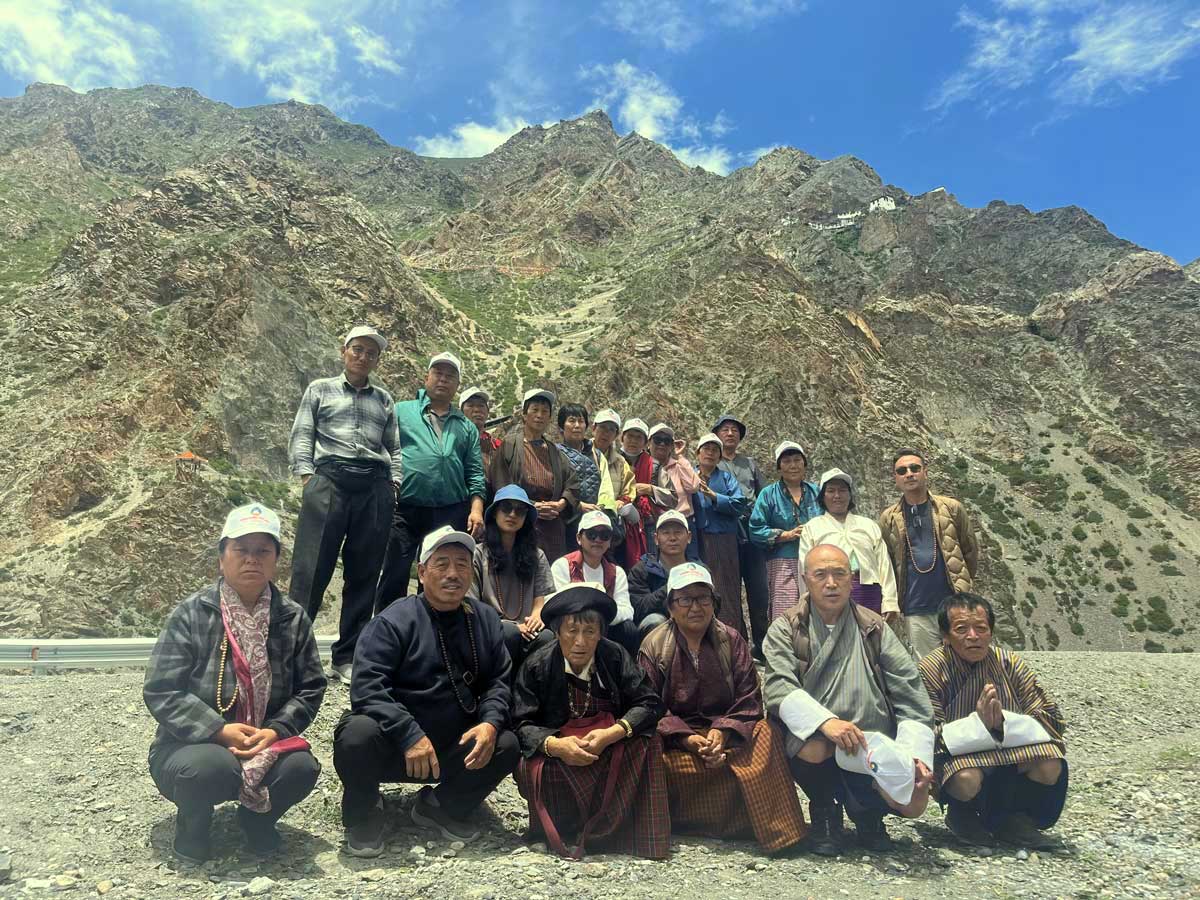
Milarepa’s birthplace is located in the village of Tsarong, nestled in the picturesque region of Tibet. Renowned as one of the most significant figures in Tibetan Buddhism, Milarepa was born in the 11th century to a family of farmers. His early life was marked by tragedy and transformation, as he faced considerable hardships, including the death of his father and the subsequent loss of his inheritance to relatives.
This tumultuous beginning led him on a profound spiritual journey, ultimately leading him to become a great yogi and poet. The village offers a glimpse into his humble origins, surrounded by the stunning natural beauty of the Himalayas. Today, it attracts pilgrims and spiritual seekers eager to connect with the essence of Milarepa’s teachings, which emphasize compassion, resilience, and the pursuit of enlightenment. The site serves as a reminder of Milarepa’s remarkable transformation from a troubled youth to a revered spiritual master.
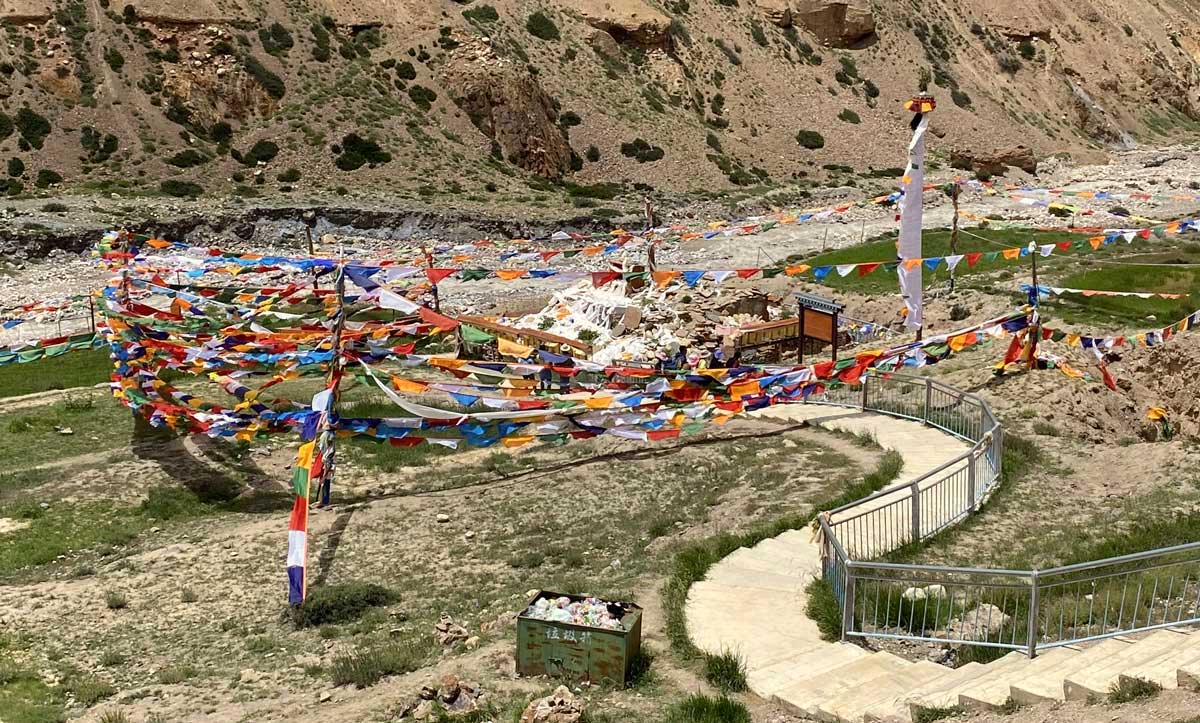
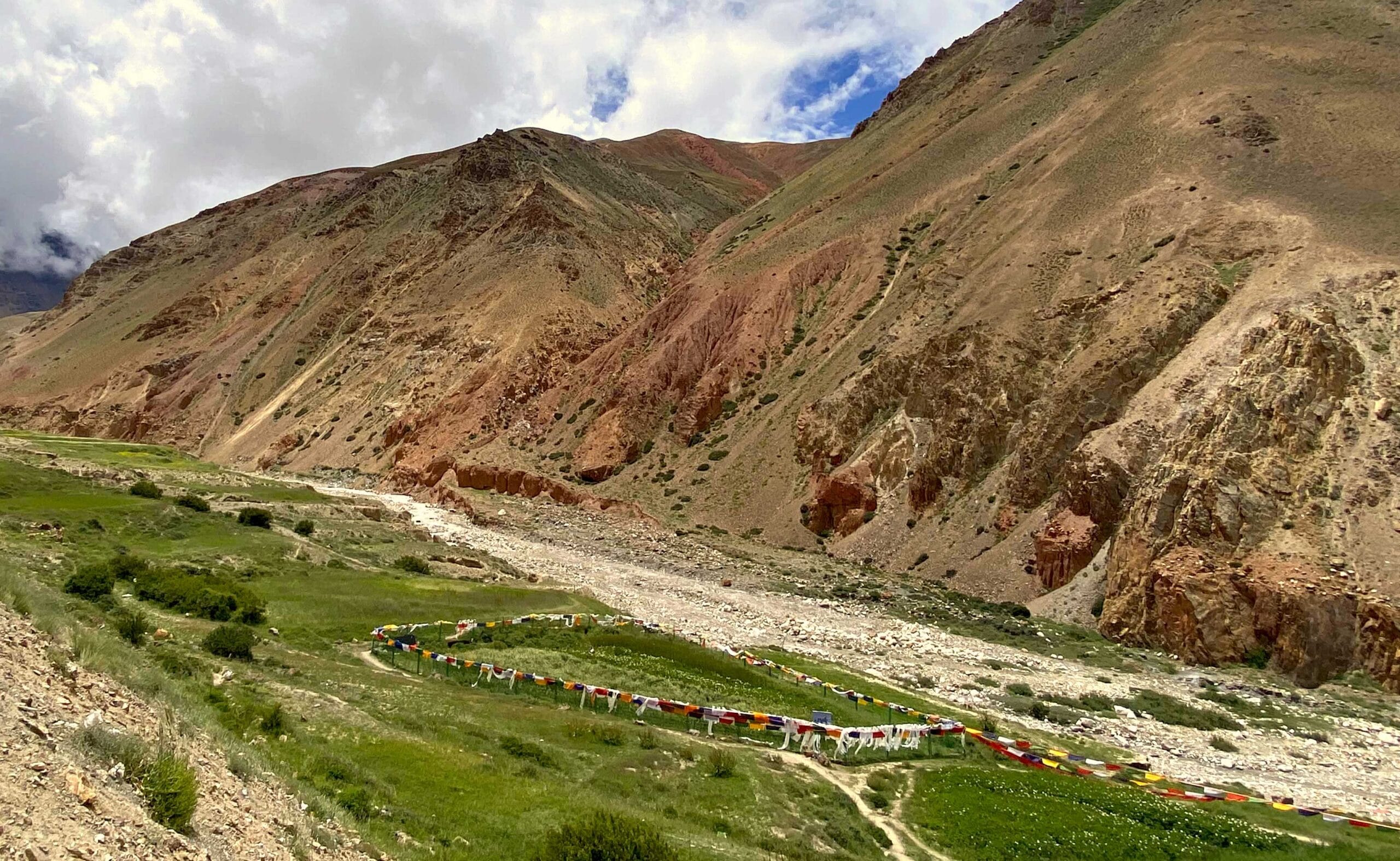
Ralung Monastery (Wylie: ra lung dgon), situated in the Tsang region of western Tibet, south of Karo Pass, serves as the traditional seat of the Drukpa lineage of Tibetan Buddhism. Founded in 1180 by Tsangpa Gyare, the first Gyalwang Drukpa and a disciple of Lingje Répa, Ralung is one of Tibet’s holiest sites. It marks the origin of the Dugpa school of red-hat monks, which remains influential in Southern, Northern, and Eastern Tibet, as well as in Bhutan, where the nation derives its name from this prominent sect. The head monastery, Ralung-til, is encircled by mountains, symbolizing the heart of a lotus. Nestled in present-day Gyantse County, it offers a stunning backdrop of towering peaks, including Gyetong Soksum and Jangzang Lhamo.
Notably, the monastery was home to the first Zhabdrung Rinpoche, Ngawang Namgyal, the 18th abbot, who united Bhutan’s warring valleys and established its enduring dual government system.
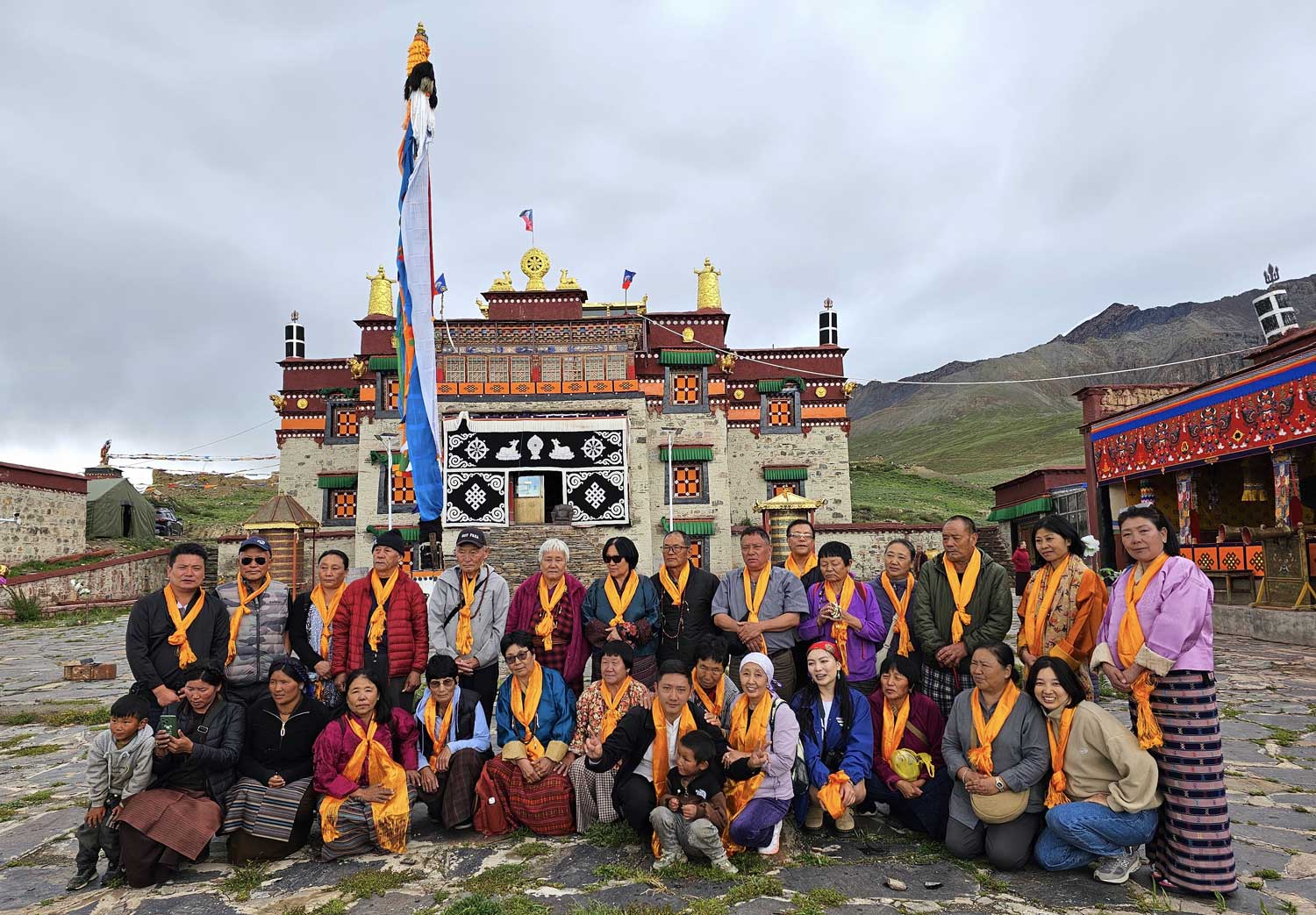
Samyé Monastery, established in the 8th century, is the first Buddhist monastery in Tibet and a vital center for Vajrayana teachings. Founded by King Trisong Detsen with the guidance of Padmasambhava and Yeshe Tsogyal, the monastery combines Indian and Tibetan architectural styles, featuring a unique mandala layout. Samyé serves as a historical and spiritual hub, where numerous renowned practices and teachings were transmitted. The monastery continues to attract practitioners and visitors, embodying the rich heritage of Tibetan Buddhism and its enduring traditions.
Chimphu (Wyl. mchims phu) is a prominent mountain located above Samyé Monastery, known for its numerous retreat caves and huts. Today, it continues to serve as a site for practitioners engaging in long-term retreats. At the time of Samyé Monastery’s founding, King Trisong Detsen requested Padmasambhava to reveal the mandala of Vajrayana teachings within Chimphu’s caves. This momentous event was attended by twenty-five disciples, including King Trisong Detsen, Yeshe Tsogyal, and Vairotsana. Of these, nine disciples achieved significant siddhis by diligently practicing the sadhanas imparted by Padmasambhava, solidifying Chimphu’s importance in Tibetan Buddhist history.
Zangri Kangmar is a revered meditation cave complex situated east of the modern town of Zangri in central Tibet, known for its significant association with Machik Labdron, a prominent figure in Tibetan Buddhism. This site played a crucial role in the transmission of Chod teachings, a spiritual practice focused on the nature of existence and self-liberation.
Today, Zangri Kangmar stands as an important pilgrimage destination, attracting practitioners and devotees from around the world. The complex features a two-story temple that houses sacred relics of Machik Labdron, honoring her profound contributions to Tibetan spirituality. Zangri Kangmar embodies the rich historical and spiritual heritage associated with Machik’s transformative teachings, making it a vital center for spiritual seekers.
Drak Yangzom and Dzong Kumbum are significant Buddhist hermitages in Tibet, located 150 km from Lhasa at elevations of 4,470 meters and 4,724 meters above sea level, respectively. Drak Yangzom features two expansive caverns where Guru Rinpoche and other yogi masters meditated, renowned for their bizarre rock formations, stalagmites, and stalactites.
The scenic hiking route from the nunnery’s foothill to Drak Yangzom spans about 4 km, taking approximately 3 hours uphill and 1.5 hours downhill, offering stunning views of the Yarlung Tsangpo Valley. Across the valley, Dzong Kumbum, less narrow but with an extensive cave system, is noted as the principal meditation site for Guru Rinpoche and Kadol Yeshi Tsogyal. The site includes a complex of three caves, with the longest extending nearly one kilometer. Dzong Kumbum is one of Tibet’s holiest locations, attracting local pilgrims and tourists alike.
Drak Yerpa Hermitage, situated about 30km northeast of Lhasa, is one of Ü’s most sacred cave retreats, particularly for those interested in Tibetan Buddhism. This site, perched at an elevation of 4,400m, provides stunning views and is a perfect full-day excursion coupled with a visit to Ganden Monastery. Many eminent figures like Guru Rinpoche and Atisha (Jowo-je) have meditated here, with King Songtsen Gampo establishing the first retreat.
Once the site of the Yerpa Drubde Monastery, the area served as the summer residence for Lhasa’s Gyutö College. Though destroyed in 1959, monks have gradually returned, despite strict governmental controls. Visitors can explore the site by taking the left branch of the stairway from the car park. Notable caves include the Rigsum Gompo Cave and Demdril Drubpuk, where Atisha meditated. Pilgrims are drawn to stone footprints attributed to Yeshe Tsogyel and the fifth Dalai Lama.
The Jamkhang chapel features a striking two-story Jampa statue, flanked by Chana Dorje, Namse, and Tamdrin. Ascending to the Drubthub-puk offers views of the Jampa statue and the Dalai Lama’s quarters. Further exploration reveals the Chögyal-puk, containing a thousand-armed Chenresig statue. Another highlight is Lhalung-puk, where Lhalung Pelde meditated after assassinating King Langdharma.
Dawa-puk (Moon Cave) holds particular significance, as Guru Rinpoche reportedly meditated there for seven years. Below the main caves, Neten Lhakhang marks where the 16 arhats were first worshipped, and Atisha taught nearby. Walking around Yerpa Lhari, adorned with prayer flags, offers a unique spiritual experience.
Higher up the cliff face are more caves and retreats, ideal for those with time for hiking, including a half-day high kora. The pilgrim guesthouse provides basic food and accommodations. In September, the Yerpa Tsechu festival features a grand thangka unveiling and cham dances. Access to Drak Yerpa is via a road from Lhasa crossing the Ngachen-la at 3980m, providing a scenic biking route.
As the leading Tibet tour operator, we were the first to handle all necessary permits and visa requirements for Bhutanese pilgrims. We’re proud to remain your top choice, offering outstanding service and competitive prices compared to other travel agencies. Below is a showcase of the wonderful Lhasa neykor we’ve had the pleasure to serve.
Processing a Tibet group visa for Bhutanese Tibet Neykor in Kathmandu is a seamless experience, primarily conducted through a registered Tibet travel agency. To start, ensure that you possess a valid passport with at least six months of validity remaining.
To initiate the process, please contact Tibet Holiday. We will assist you in obtaining the necessary Tibet travel permit and connect you with our trusted agent in Nepal, who will handle the visa application on your behalf. The visa processing typically takes 3-4 business days and requires a minimum of five individuals in your group for the invitation to be sent to the Chinese embassy.
Once you receive the group visa, you will be able to visit both Tibet and mainland China within one month. This organized approach ensures that you can fully enjoy your travel experience without any administrative hurdles.
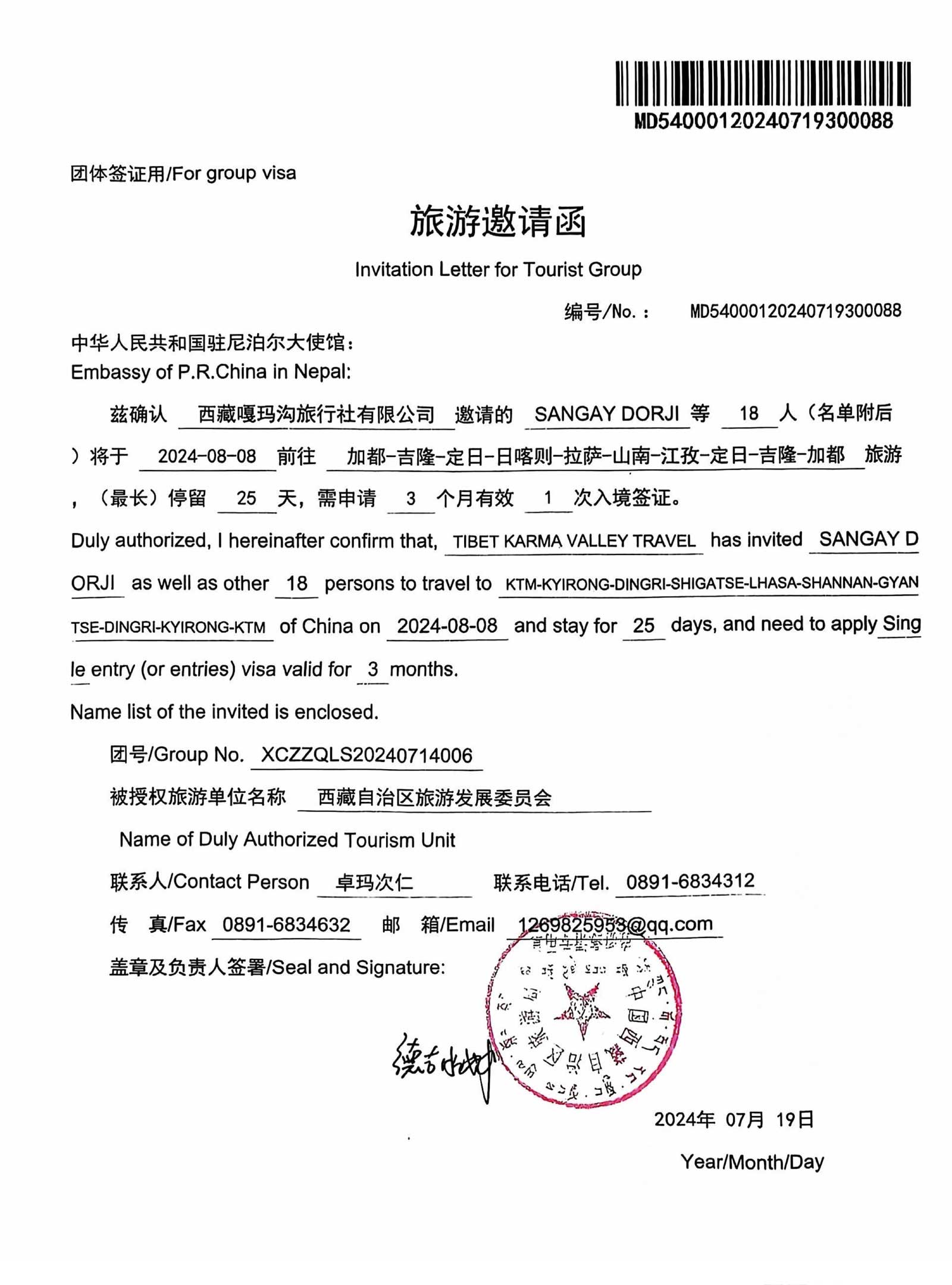
The hidden city in Tibet often referred to is “Shangri-La.” This mythical paradise is said to be a place of peace and tranquility, embodying a utopian society. Although the concept of Shangri-La originates from James Hilton’s 1933 novel “Lost Horizon,” it has become associated with various locations in Tibet and the surrounding regions over the years.
There are numerous monasteries in Bhutan that hold significant historical and cultural value to Buddhist lineages. According to Bhutanese traditions related to Tibet, there are sacred sites such as Shang Zabulung, Zangri Kangmar, Drak Yerpa Meditation Caves, Tsurphu Monastery, Takchen Bumbari, Yarlung Shedrak, and Chimphu, among others, that are currently accessible in accordance with government regulations. However, there are also sites, such as Sekhar Gutok, that remain inaccessible due to these regulations.
Typically, a Tibet Neykor pilgrimage can last anywhere from a 10 days to several weeks. Some popular circuits, like the ones involving major monasteries or sacred mountains, might take longer, requiring more time to travel and perform rituals or prayers at each location.
If you’re looking for specific details about a particular Tibet Neykor route or its significance, please provide more context, and I’d be happy to assist!
Provide Necessary Documents: You will need to provide certain documents to our Tibet travel agency, which may include:
Group Visa Application: We will apply for a Tibet Travel Permit on your behalf. Note that individual permit applications for Tibet are generally not accepted; you must apply as part of a group.
Payment: Pay the required fees to us for services included in your Neykor.
Processing Time: We will send an invitation letter to Chinese embassy to Kathmandu and you should be there in person before 3 -4 business days. Our partner will prepare all documents in advance and submit to the Chinese embassy.
Receive Your Visa: Once your group visa is approved, our partner will handle it to you before departing for Tibet.
Neykor to Tibet: Ensure you have your group visa and any other necessary documents ready when traveling to Tibet, as you may need to show these upon entry.

